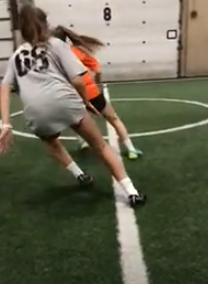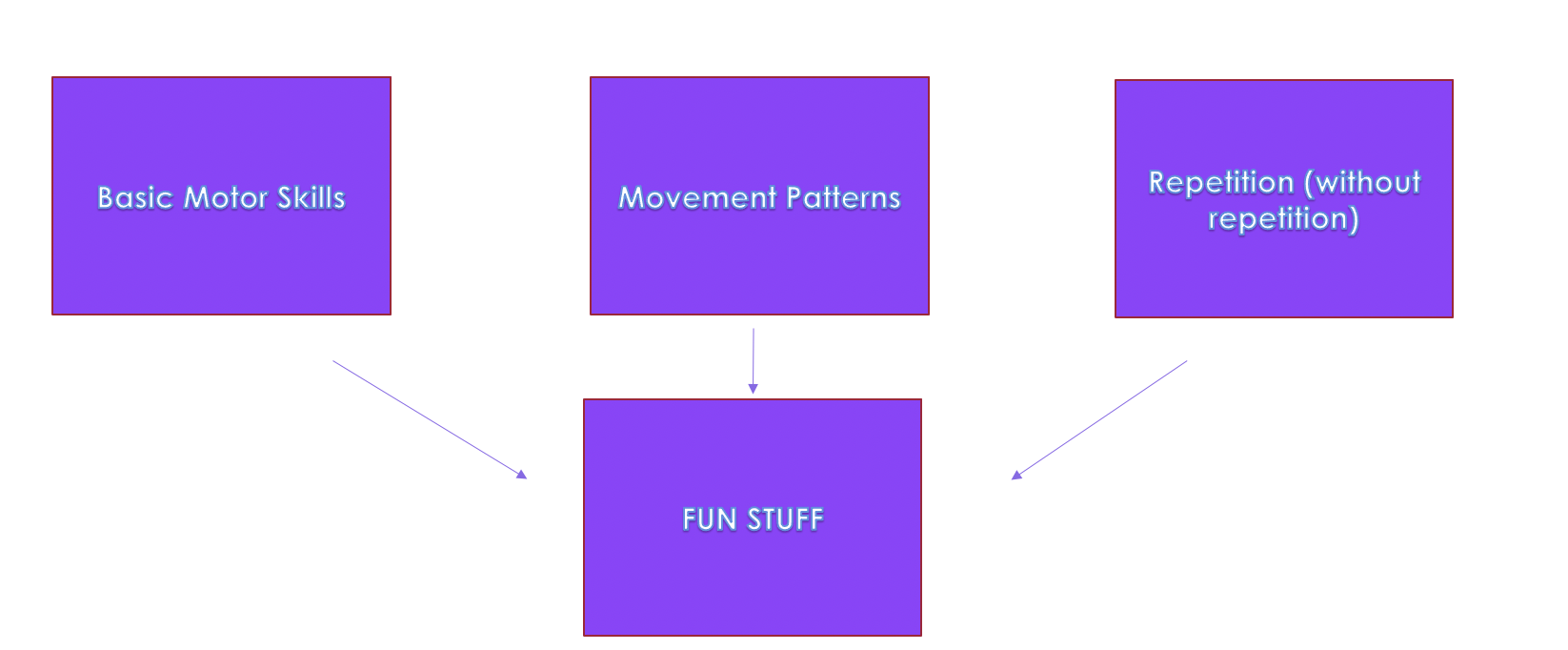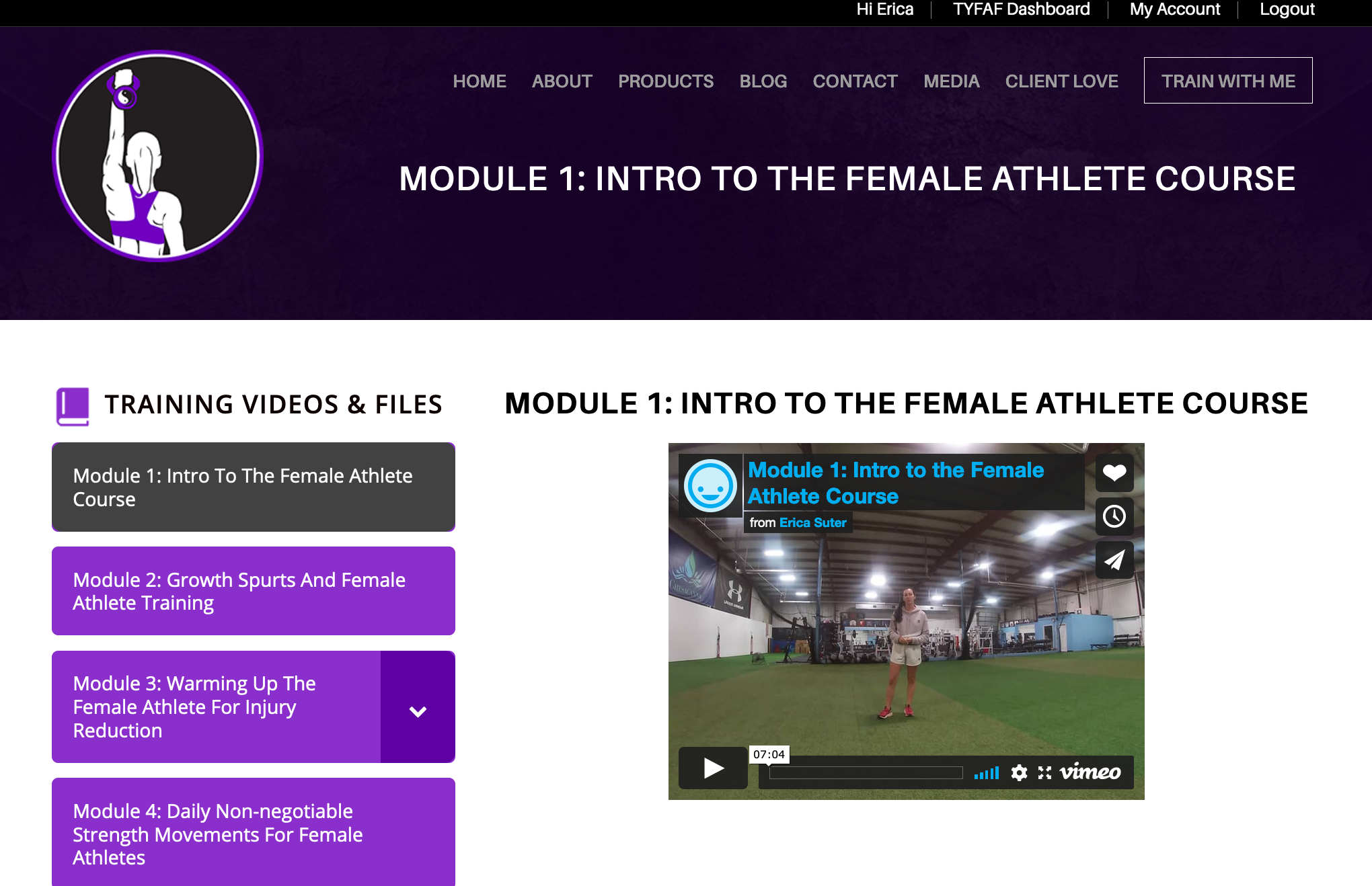
19 Jan Why Female Athletes Need Repetition (without repetition) To Improve Speed and Change of Direction
Every time I sit down to tap away at my keyboard to write a new article, I put pressure on myself to make it a banger.
Admittedly, the last article I wrote was just that. It was an offbeat commentary on the virus and boosting immune function. Because guess what? The immune system ain’t a conspiracy. You can read it HERE.
The article was so controversial that it raised eyebrows, blew minds, birthed fiery tweets at me (which I ignored ALL of them), and caused people to cancel me.
Okay, okay, well maybe just a handful canceled me…and I survived. ;-O
If you’re still here, I love you and appreciate you for seeing me as a human with alternative perspectives to the mainstream.
Not only have you been supportive of my work for many years, as well as accepting of different views, you’ve also seen me grow, oscillate in my opinion, evolve in my training philosophy, and write bodies of work that are triggering…ones that you can handle, as well as see the nuances in.
Too, you never labeled me as this or that, nor did you define me by a party, or assume I took one side. Rather, you have seen me as an imperfect human just like yourself, who questions everything, and doesn’t take everything as truth.
Eh, well, I take my cat as being the best and fluffiest cat on Earth as truth. That’s about it.

And the rest is noise.
So yeah.
You rock, reader!
Thanks again for being here and staying with me.
Since I’m still recovering from my last 3,000 word banger, I decided to return to shorter pieces that still encompass rich information. Not every blog can be as explosive as Mount Doom or as epic as the Fall of Sauron.
So today, I’m sticking to the theme of the good old-fashioned basics.
Recently, I did a presentation on how young female athletes can earn their right to doing the cool things – the glam you see on social media, from resisted sprints, to heavy lifts, to barbell movements, to high box jumps, to fancy footwork drills, to chaotic agility games, and so much more.
To ensure athletes are safe and progressed in a way that keeps injury risk low, they need to start with the basics.
To ensure athletes are safe and progressed in a way that keeps injury risk low, they need to start with the basics Share on XThink of the basics as the ingredients to the cake – the flour, the eggs, the butter, the milk – all the richness that holds the masterpiece together. Then, think of the cool training as the icing and the sprinkles – all the things that make it picturesque and make people “ooh” and “ahh.”
Here is an easy to follow framework when working with young female athletes on improving performance:

So long as you nail down the top three for several years, and better yet, utilize these concepts for the length of their athletic careers (from elementary school to college and beyond), you are setting them up to be strong, resilient and healthy for a lifetime.
Oh! And then having more fun with the “fun stuff.”
Adding more load.
Performing movements under speed.
Producing power.
Jumping higher.
Let’s dive in:
1. Basic Motor Skills
Here’s what you need to know: these are the foundational skills in human movement that enhance more complex movement. Things like balancing, skipping, marching, climbing, and crawling build the coordination and stability, as well as body awareness to handle more intense actions in sports, such as changing direction or sprinting at max velocity.
For a drill as simple as skipping, there are several amazing benefits at play here: ball of foot strike, upright posture, stable core, and hip flexion, and these are all components to faster sprinting. I recommend reinforcing all of the basic motor skills daily to some capacity, even if you’re having players march in their kitchens, or you incorporate into warm-up.
One caveat: they need to execute deliberately and with perfect form. Going through the motions will only hinder their performance.
2. Movement Patterns
Movement patterns are what enhance strength, as well as serve as the foundation to deceleration, lateral speed and change of direction.
I’m only going to go over one for the sake of brevity in this article: The Hip Hinge.
It is a “piking back” of the hips, with soft knee flexion, ankle dorsiflexion (think toes curled toward shin, foot flat on ground), and a neutral spine and proud chest.
What this movement allows athletes to do is move laterally faster with a lower center of gravity. This way they’re able to push off the outside food, but be ready at the bat of an eyelash to switch and go the other way.
Adding on, it applies in deceleration “pumping the brakes” before a rapid 180 degree turn. As you can see in the video below, these girls do a great job of getting into Athletic Stance, and allowing the quadriceps, gluteals and hamstrings to co-contract. Keep in mind, though, this all starts with the foot being in a position that works in favor of the kinetic chain going up the body. They don’t fall forward on their toes, nor do they plant their foot to take their lower body in one direction, and their upper in another (that is the recipe for a knee blowout).
Think: ‘are the ankle, knee and shoulder in a line that takes me where I want to go?’ Feel free to pause the video at the foot plant.
Beyond change of direction, Athletic Stance allows female athletes to work on more intense jumps, namely, from a higher drop height. In this case, they have to be able to absorb more load, and control their ankle and knee joints.
3. Repetition (without repetition)
Every basic motor skill, every movement pattern needs to be repeated over time to develop the athlete. We want to reinforce the basics such as foot strike, posture, stability, and knee positioning, but we also want to allow athletes to explore a diverse menu of stimuli to not over train certain muscle groups.
As one example, low level plyometrics such as Bunny Hops, can be done in the linear plane, in a static position for a few weeks.
Then, you can progress to the frontal, dynamic plane for more gluteus medius recruitment. The gluteus medius is a stabilizer of the pelvis, as well as the knee, and helps with alleviating low back and knee pain.
You can also add variety to a basic march and skip drill by blending the two movements together for new motor learning opportunities and a smooth transition of coordination:
One more way to do this is to add in a rotational component, which is more applicable to the forces in a game that force athletes to maintain balance and stability in the hips:
4. FUN!
Now, it’s time to have fun!
One key performance indicator to use as a coach is LAUGHTER. The more athletes enjoy themselves, the more they are excited about working hard in training.
One key performance indicator to use as a coach is LAUGHTER. The more athletes enjoy themselves, the more they are excited about working hard in training Share on XHere are several fun and challenging drills that are a progression after learning the basic motor skills and movement patterns:
Before I wrap up, the common theme with all of these is repeating the basic motor skills and movement patterns over and over again, while also sprinkling in a variety of stimuli that comes from either new plane of motion, muscle action, speed, rhythm, or chaotic setting.
The goal is to gradually progress athletes as they accomplish new feats of strength. Be careful not to reach diminishing returns, or over train the same muscle groups over and over again.
Enjoy and let me know how your athletes do!
To learn more in depth about teaching female athletes change of direction, jumping and landing, speed and strength technique, GET TOTAL YOUTH ATHLETE FITNESS HERE – a 15 module video course on training the female athlete in a practical setting to reduce ACL, become strong, increase speed, and bolster agility.



No Comments